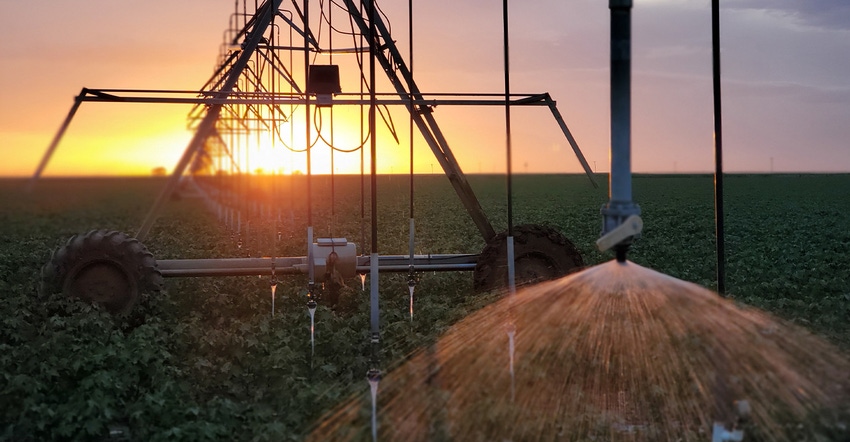April 19, 2022

In a Texas region known for its desert landscape and dry environment, scientists and groundwater experts are mapping and evaluating a potential new underground water source. The Maverick Basin aquifer, identified by the Groundwater Advisory Unit of the Railroad Commission of Texas in 2021, is located thousands of feet deep in the Glen Rose Formation and has been tentatively mapped in Maverick, Zavala, Dimmit, Kinney, and Uvalde counties.
The Texas Water Development Board (TWDB) Brackish Resources Aquifer Characterization System (BRACS) Team and Groundwater Technical Assistance Team are involved in assessing the aquifer. Natalie Ballew, Groundwater technical assistance manager, shared some background on the aquifer, which has the potential to contribute much-needed water supply to the area.
Natalie Balle w, Groundwater technical assistance manager (Photo by )
w, Groundwater technical assistance manager (Photo by )
When and how was the aquifer discovered?
The Railroad Commission’s (RRC’s) Groundwater Advisory Unit announced the identification of the aquifer in November 2021. The agency’s research into the aquifer began after a driller sought permission to convert an oil well into a drinking water well. This process resulted in the RRC’s identification of the aquifer’s production of a large quantity of freshwater, which is surprising given the depth is over a mile below the land surface in the deepest locations. The RRC shared the aquifer’s identification with the TWDB and encouraged studies on the aquifer’s characteristics and research on the possibility of designating the formation as an official aquifer.
What research is being conducted on the aquifer?
In addition to other studies, teams from the University of Texas and Texas A&M University are conducting water quality studies to find out where the water is coming from and how the aquifer recharges. One leading theory is that the Maverick Basin aquifer is recharged by precipitation onto the outcrop (where the formation is exposed on the land surface) in Mexico.
The TWDB BRACS Team is currently analyzing data on the Maverick Basin aquifer as part of a regional Edwards-Trinity (Plateau) Aquifer brackish groundwater study. Once a better understanding of the quantity and quality of water in the formation has been attained, TWDB staff members will begin the process of gathering data to evaluate water supply needs and future demands on the aquifer. Ultimately, research will help determine if the aquifer can be classified as an official aquifer. If the Maverick Basin aquifer is classified as an official aquifer, the TWDB will work to create a groundwater availability model as a resource for regional water planning efforts.
In contrast to the initial studies on the last officially designated aquifer, Cross Timbers Aquifer, which took about a year to complete, research on the deeper Maverick Basin aquifer will likely take several years. Part of the reason initial research will take more time is that there are fewer wells in this region than in the Cross Timbers Aquifer region to provide data about the water underground.
How could the research findings impact communities?
If the Maverick Basin aquifer is found to be a useable freshwater resource, it could be another water supply option for communities in that area. With the assistance of landowners and funding, it is possible that existing oil and gas wells in the aquifer’s area could be converted to public water supply wells. In addition, if the aquifer receives an official aquifer designation, long-term water use plans for the aquifer could be established, helping to ensure it is managed sustainably.
How will the name of this aquifer be selected?
Unofficially, the new aquifer has been called the “Maverick aquifer” due to its location in the Maverick Basin of Maverick County, but it is also referred to as the “Deep Glen Rose Formation in South Texas” because the aquifer is part of that geological formation. Another name used is the "Maverick Basin aquifer." If designated as an official aquifer, the TWDB Groundwater Technical Assistance Department will coordinate the naming process. In the past, aquifer names have reflected their geographic region or the aquifer’s characteristics and features.
For example, the Cross Timbers Aquifer in north-central Texas was designated a minor aquifer by the TWDB after the agency identified several possible names for the aquifer. The TWDB hosted a public survey, and "Cross Timbers Aquifer" was the most popular.
Source: is Texas Water Development Board, which is solely responsible for the information provided and is wholly owned by the source. Informa Business Media and all its subsidiaries are not responsible for any of the content contained in this information asset.
Read more about:
AquiferYou May Also Like




